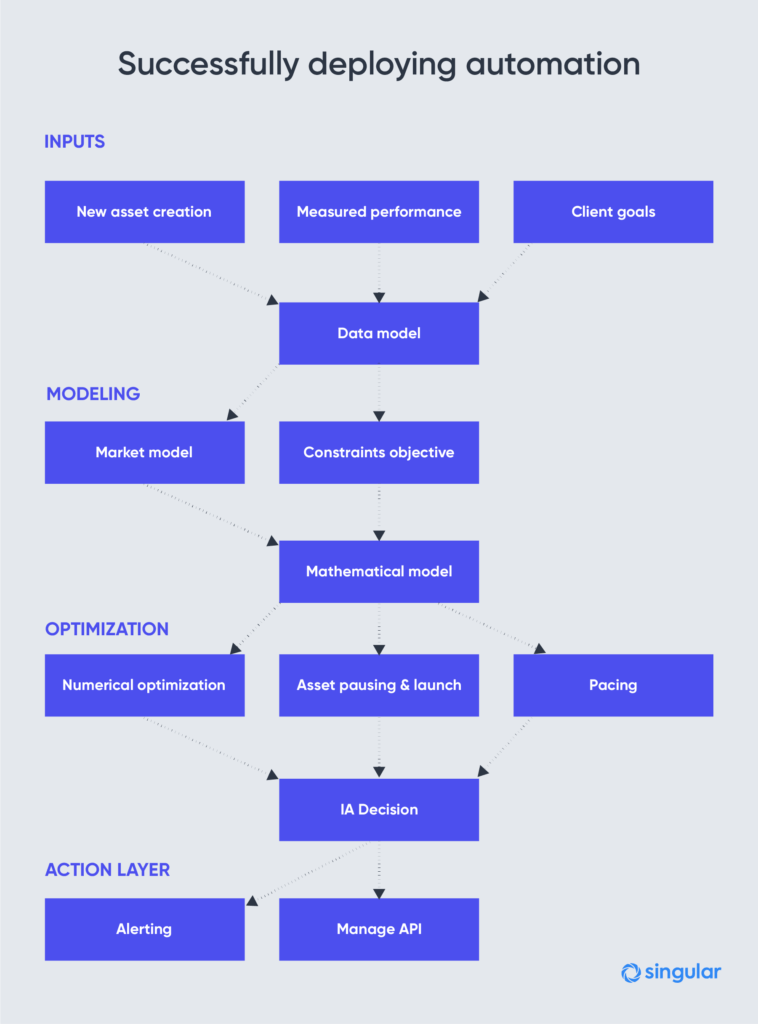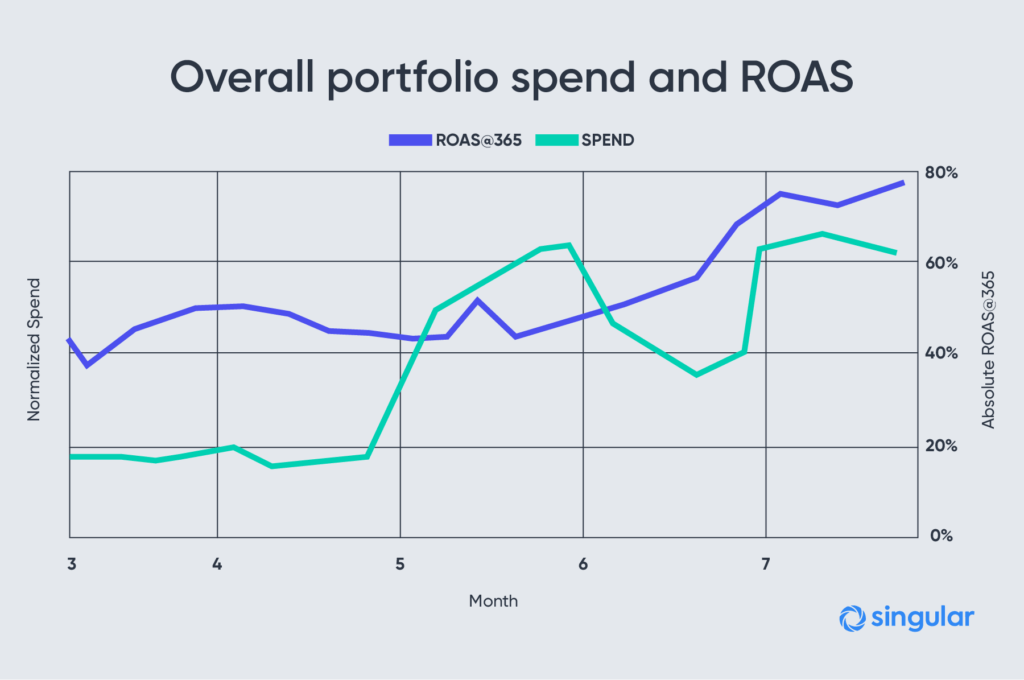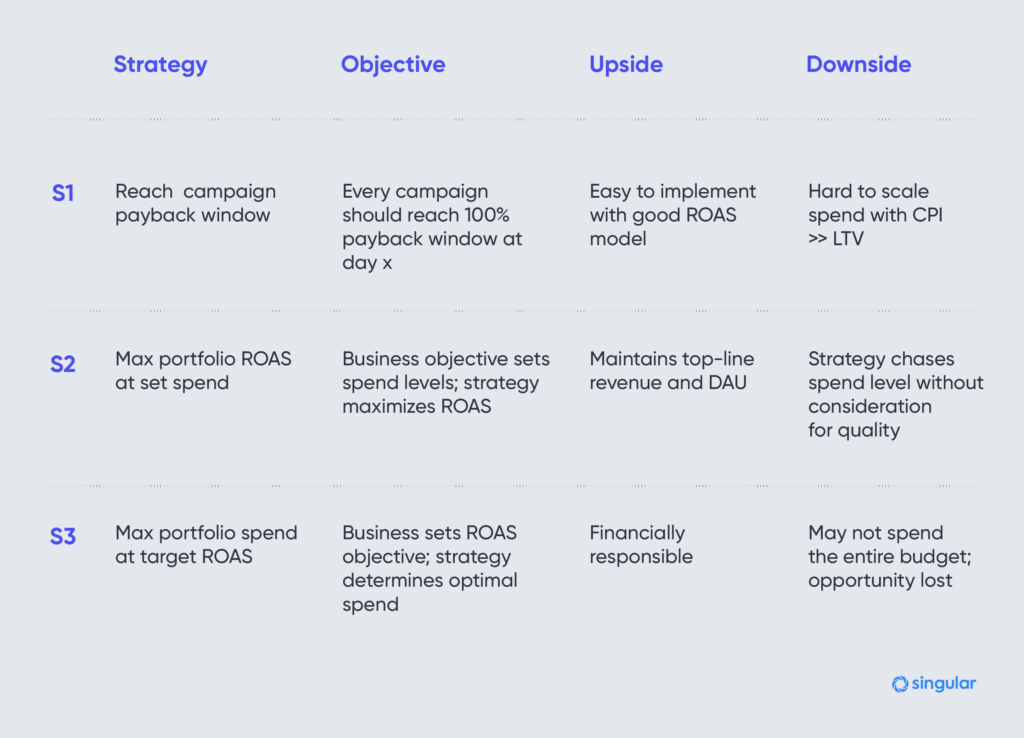The future of user acquisition: automation using algorithms
Paul Bowen understands UA. As CRO of AlgoLift, he and his team automate user acquisition on Facebook, Google, and Apple Search by leveraging user-level predicted LTV. This is a guest post by Paul.
Success metrics for performance marketing have changed dramatically over the past 10 years. A focus on upper-funnel metrics such as CPI and CPC has evolved to assessing down-funnel, short-term, post-install metrics such as D7 ROAS or cost per free trial. Few corporate teams build business plans on 7-day returns, and so early return metrics make marketing teams seem like cost centers.
Instead, something happens once marketers understand that long-term returns are the North Star metric. A business reframes its perception of performance marketing as a cost center, to the understanding that user acquisition (UA) is an investment in the future performance of the business.
AlgoLift automates user acquisition on Facebook, Google, and Apple Search. How? By leveraging user-level predicted LTV at horizons ranging from 30 days to two years, along with a portfolio theory to buy ROAS-maximizing installs. Using algorithmic market models to understand the predicted future performance of UA campaigns, AlgoLift is able to take a portfolio approach to automate UA that manually operated systems can’t achieve.
Getting started with automating user acquisition using algorithms
First off, a core challenge with automating UA is access to high fidelity, accurate, clean data—garbage in, garbage out. Most companies store their attribution, transaction, and in-app engagement data in different data warehouses. This adds significant integration costs and complexity, and potentially limits the scope and scalability of a turnkey automation solution.
To solve this, Singular offers a compelling solution for clients to consolidate cost and revenue data. AlgoLift can access this data at both the user and cohort level through an API to build LTV and pROAS models. This allows us to understand the future performance of UA campaigns. Leveraging this data, AlgoLift uses campaign management APIs on Facebook, Google, and Apple Search to automate UA in a way that optimizes for long-term returns.

Benefits of using algorithms to automate UA
A computer may never be able to think as strategically and creatively as a human. Still, today’s machines are better at solving advanced mathematical problems and executing laborious, repetitive tasks. Given that, automation using algorithms offers a plethora of advantages.
Increased ROAS performance
A key success criteria for automating UA must be to increase long-term ROAS performance. The cost to automate UA campaign optimization using algorithms must exceed current human performance.
AlgoLift found that optimizing over $100m of UA spend enabled us to increase predicted d365 ROAS by up to 45 percentage points over a five-month period. We saw these improvements through daily incremental changes over a long period of time.

Solving complex mathematical problems
Most performance marketers try one of the below user acquisition strategies for their campaigns.

While S1 is relatively easy to implement with a robust predictive ROAS model, it’s not optimal for scaling spend.
S2/S3 are better strategies for optimizing spend or ROAS, but require complex mathematical models run on a daily basis to understand the best budget allocation across campaigns.
Algorithms are also valuable when understanding how to address small cohorts. Campaign-level predictions can be noisy – it’s challenging to predict the LTV of future users based on the behavior of a very small group of recent acquisitions without introducing significant uncertainty in the estimate. Rather than casting ambiguity on the practice of automation in general, you can address this concern by considering a more useful perspective.
A human operator might struggle to make decisions in the face of this uncertainty. They may even (wrongly) conclude that they should avoid using granular data at all. The algorithm, however, is built to operate with the uncertainty in mind and move the needle on performance via a series of directionally correct changes over time.
Automation of repetitive tasks
During a 10-month period and servicing 15 clients, AlgoLift made approximately 50,000 automated bid and budget adjustments across Facebook, Google, and Apple Search. We made these changes to optimize campaigns towards the client-defined KPI (S2/S3). We implemented them using the predicted long-term returns of the campaign based on its relative performance as part of an overall portfolio of campaigns.
Reduced workload
Releasing a UA team from the task of making daily changes to campaigns allows the team to think more strategically and creatively, ultimately focusing on broader tasks that machines can’t yet fully automate:
- Campaign ideation and creation
- Creative and ad copy creation and iteration
- Exploration of new countries or marketing sources
- Event or product-driven marketing decisions
The future of user acquisition
Algorithmic automation of user acquisition brings a mathematically sound, technical advancement to manual campaign analysis and optimization. If it’s executed correctly, it frees up significant bandwidth for UA teams, moving their focus from laborious, repetitive, and inefficient tasks to creative and strategic initiatives.
Most importantly, it realigns an organization along clearly understood, well-defined long-term goals. It delivers significant improvements in ROAS, which moves UA from a cost center to ensure the future profitability of the business.
Stay up to date on the latest happenings in digital marketing


